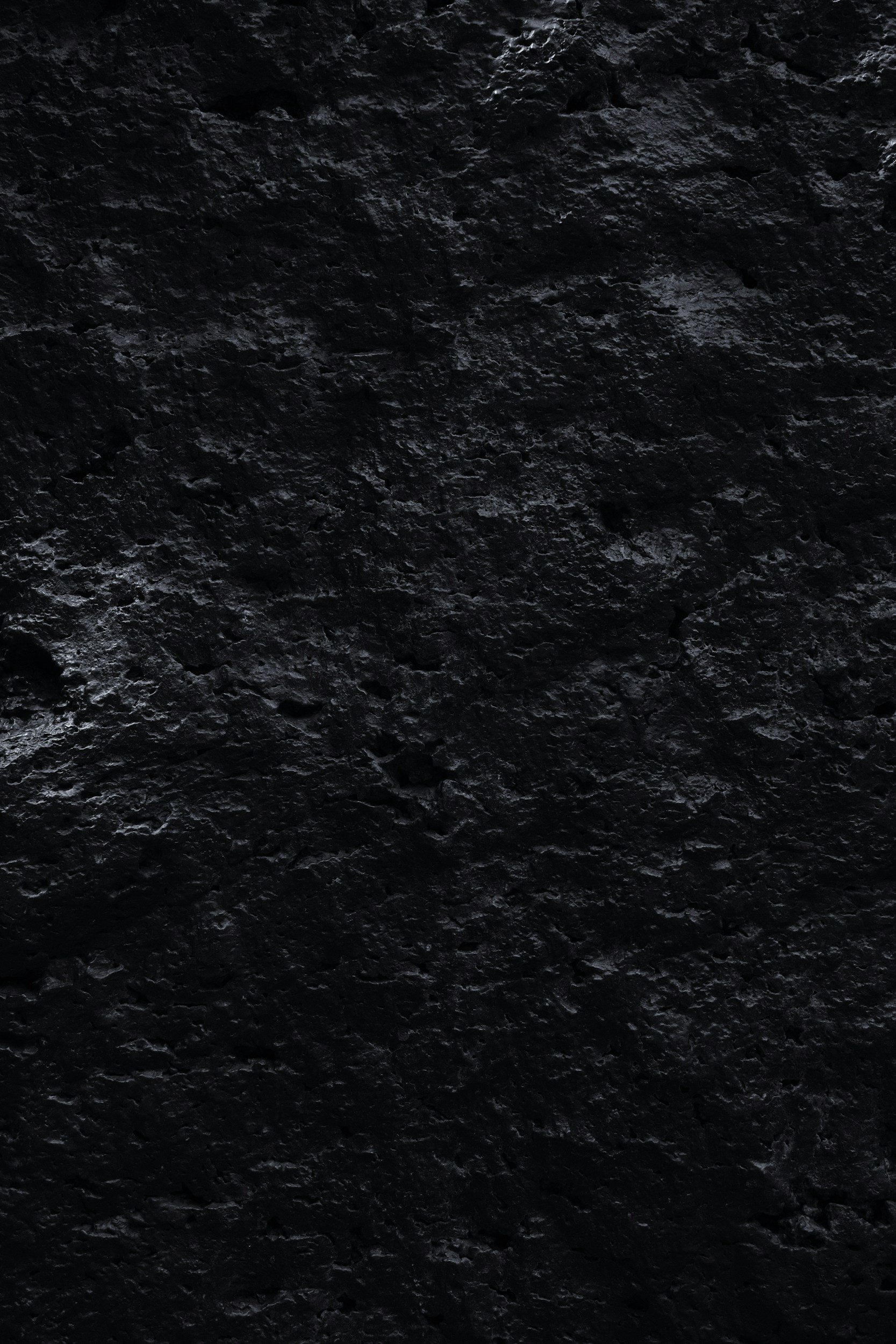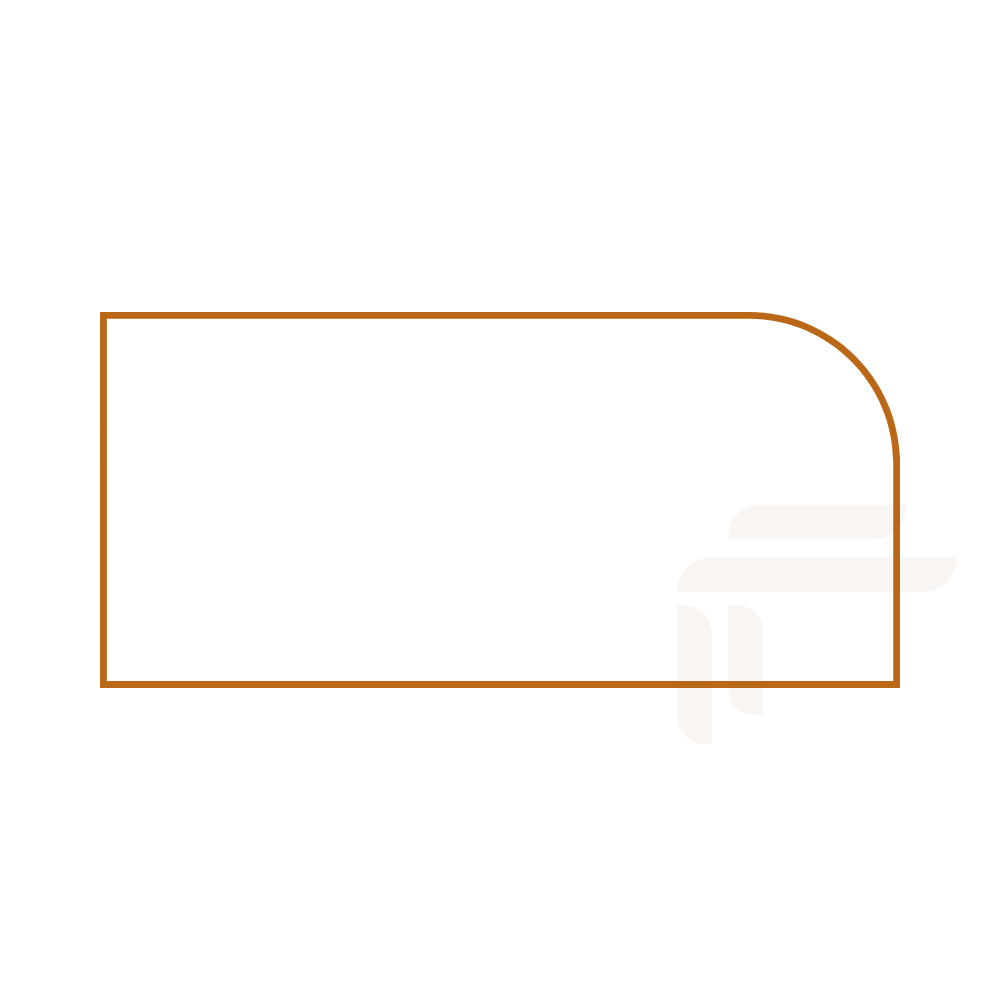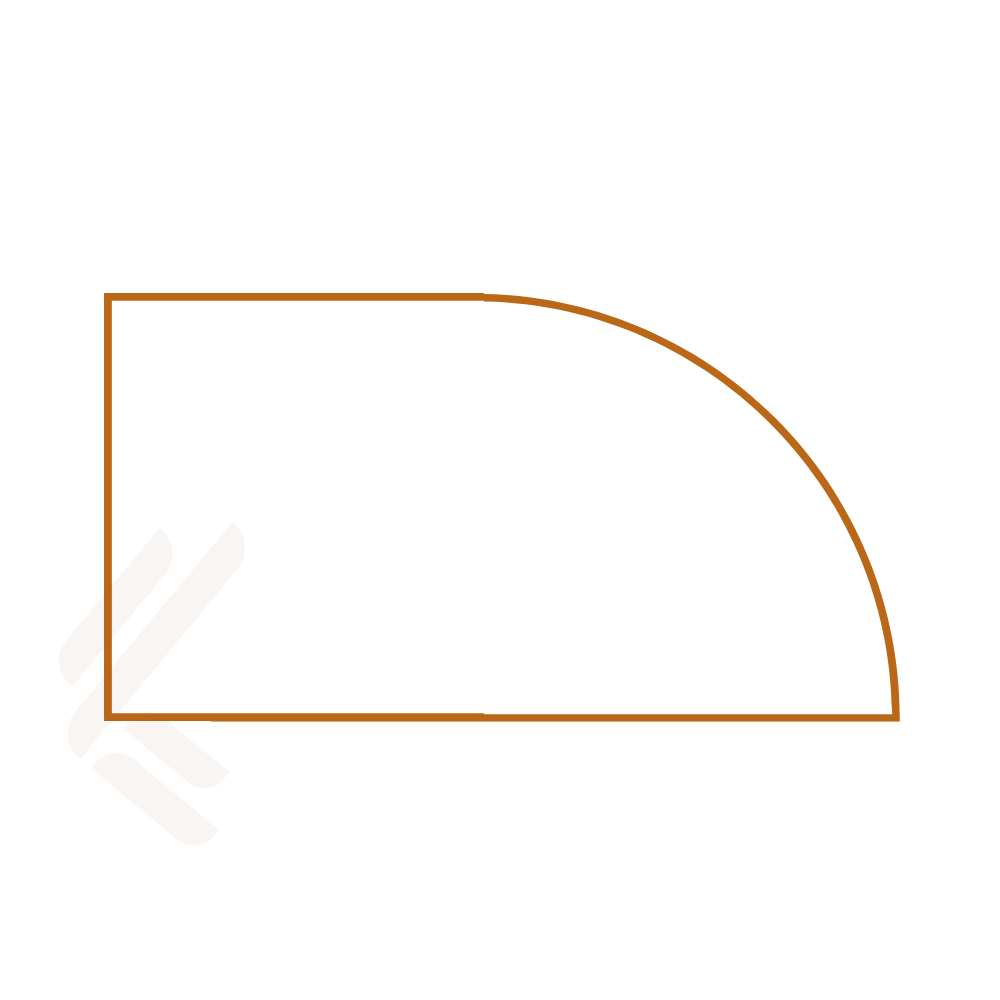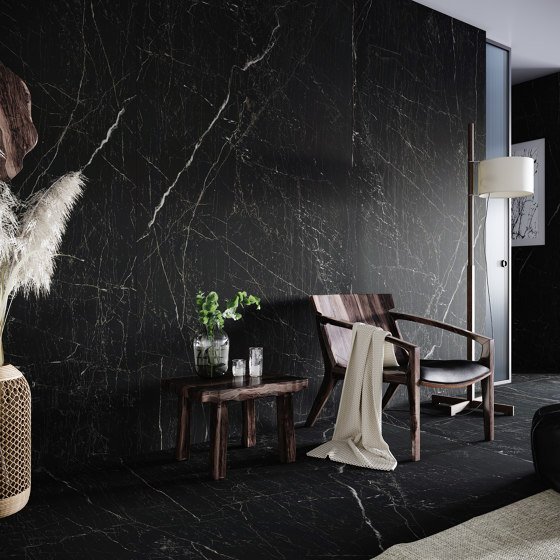Hidden Edges of Porcelain & Beyond
For years, the world of porcelain, sintered stone, and ultracompact surfaces has been confined to a single, predictable edge: the miter. But what if we told you there's more? Much more.
Stand out, create, transform: Our edge profiles empower design.
Eased Edge
The eased edge profile is a subtly rounded edge that softens the sharp corners of the countertop.
You cannot go wrong with it!
Benefits:
Gentle rounding provides a comfortable feel.
Subtle and understated yet adds a touch of sophistication.
Versatile and works well with various design styles.
Best For:
Every space, including kitchens, bathrooms, and vanities.
Spaces seeking a balance of modern and traditional elements.
Mitered Edge
The dramatic cascade that demands attention. The mitered edge profile is the most common edge for porcelain countertops, featuring a seamless 90-degree angle that creates a clean and minimalist look.
Benefits:
Sleek and modern aesthetic.
Creates the illusion of a thicker countertop.
Durable and easy to clean.
Best For:
Modern and contemporary kitchens and bathrooms.
Spaces where a minimalist and clean look is desired.
Sharknose Edge.
The shark nose edge profile features a sleek, thin edge that gives the countertop a floating appearance.
Benefits:
Thin, sleek edge
Creates a floating effect
Modern and minimalist design
Best For:
Ultra-modern kitchens
Sleek bathroom designs
Contemporary and minimalist spaces
Half Bullnose Edge.
The half bullnose edge profile offers a gently rounded top edge while the bottom edge remains straight, providing a balanced look.
Benefits:
Soft, rounded top edge for comfort
Straight bottom edge for a modern look
Durable and chip-resistant
Best For:
Kitchens seeking a blend of comfort and style
Bathrooms with transitional decor
Practical and high-traffic spaces
Full Bullnose Edge.
The full bullnose edge profile features a continuous, elegant curve that wraps around the entire countertop edge.
Benefits:
Soft, rounded edges enhance safety
Durable and chip-resistant
Easy to clean and maintain
Best For:
Traditional kitchens
Family-friendly environments
Bathrooms seeking a classic touch
Demi Bullnose Edge.
The demi bullnose edge profile is a sophisticated blend of form and function. It features a unique curve that extends further back on the countertop than other rounded edges, creating a gentle wave-like effect.
Benefits:
Distinctive wave-like design adds visual interest
Versatile design complements various styles
Durable and chip-resistant
Best For:
Kitchens and bathrooms seeking a balanced design
Spaces where both comfort and style are priorities
Transitional or contemporary interiors
Reversed Demi Bullnose Edge.
The reversed demi bullnose edge profile is a unique twist on a classic design. By placing the rounded edge on the bottom and leaving the top straight, it creates a bold, modern look that adds a touch of visual intrigue to your space.
Benefits:
Bold and modern aesthetic
Adds visual interest and uniqueness
Creates a floating or cantilever effect
Best For:
Contemporary kitchens
Elegant bathroom designs
Modern tabletops
High-end residential and commercial spaces
Double Bevel Edge.
The double bevel edge profile features angled cuts on both the top and bottom edges of the countertop, creating a mirrored, symmetrical look.
Benefits:
Symmetrical, decorative design
Adds depth and visual interest
Durable and easy to clean
Best For:
Modern and elegant kitchens
Luxurious bathroom designs
High-end commercial spaces
Bevel Edge.
The beveled edge profile is characterized by an angled cut along the top edge, adding a subtle decorative touch to any countertop.
Benefits:
Available in various bevel widths for a customized look.
Catches and reflects light, enhancing the visual appeal.
Classic and timeless design element.
Best for:
Traditional or transitional kitchens.
Formal dining areas.
Spaces where you want to emphasize elegance and sophistication.
Double Slim Edge.
The double slim edge is a sophisticated design element that elevates the aesthetics of any surface. It features two layers of material, each with a slim, minimalist edge, stacked to create a total thickness of 24mm. The top layer often contrasts with the base layer, offering a visually striking interplay of colors, textures, or finishes.
Benefits:
Seamless Integration: Adapts to diverse applications, creating cohesive design schemes.
Enhanced Aesthetics: Clean lines and minimalist profile evoke modern elegance.
Unique Trendsetter: Be among the first to embrace this emerging trend.
Best For:
Spaces that need a unique touch: Adds individuality and flair to any space.
Design Enthusiasts: A subtle yet impactful way to elevate your space.
Modern Spaces: Complements contemporary interiors with its sleek aesthetic.
See Different Types of Countertop Edge in Action
Choosing the right countertop edge can be tough. We make it easy! Explore our gallery of stunning projects and see how different edge profiles transform kitchens and bathrooms.
Mitered Edge.
The veining flows seamlessly across the mitered edge, creating the illusion of a single slab of stone. It's a striking detail that adds to the modern aesthetic.
Double Slim Edge.
Clean lines and minimalist design with a double slim edge on this porcelain table top. The subtle layering adds dimension and visual interest to this modern dining space.
Reversed Demi Bullnose Edge.
The reversed demi bullnose edge adds a subtle curve to this porcelain surface, creating a soft and elegant touch.
Double Bevel Edge.
This close-up showcases the precision of a double bevel edge applied to a sleek, 12mm thick porcelain countertop.
Double Slim Edge.
This is another example of a double edge profile. The contrasting inlay adds sophistication and visual interest without overpowering the overall design. It's a subtle detail that makes a big impact.
Unique Angled Edge.
This countertop with a unique angled edge, achieved through a masterful combination of mitered edge techniques. The design seamlessly blends a vertical edge with a beveled edge, creating a thick, substantial look that adds a touch of sophistication to the space.
Full Bullnose Edge.
A full bullnose edge applied to a 20mm thick porcelain countertop. Its smooth, rounded profile adds a touch of softness to the design.
45-Degree Edge.
This modern kitchen design showcases a striking 45-degree edge detail on both the countertop and cabinet doors. The sharp lines and precise angles create a sense of drama and continuity, making a bold statement in this contemporary space.
Carved Edge.
This Lapitec full body countertop showcases the artistry of a custom carved edge.
Fluted Channel Edge.
This contemporary kitchen island showcases a striking fluted edge, created by meticulously shaping the countertop material into a series of vertical grooves.
Geometric Edge.
This captivating countertop design features a mesmerizing emerald green finish and a bold, geometric edge profile. The angular cuts and polished surfaces create a sense of luxury.
Double Slim Edge with Gap Detail
Elevate your kitchen design with the perfect edge profile. Click here to learn how waterfall leg and mitered edges can transform your space!
Important Note
Important Note: Achieving these specialized edge finishes requires the expertise of fabricators experienced in working with mineral surfaces. If you're told these edges aren't possible, it's likely due to a lack of familiarity with the unique properties of these materials.
Don’t settle for average. Discover the edge artisans trusted by Lais Luz who excel in porcelain panels, sintered stone, and ultra-compact surfaces.

FAQs
-
YES! But, it's important to remember that not all fabricators have the expertise or equipment to work with them. About 90% of fabricators specialize in standard edges like eased and mitered. So, if you have your heart set on a more intricate profile, like a sharknose edge, you'll need to find a fabricator with experience handling mineral surfaces such porcelain, Dekton, and sintered stone.
-
Choosing the perfect edge profile is a personal decision, but here are some factors to guide you:
Your Design Aesthetic: Are you going for modern, traditional, or something in between?
The Material: Certain profiles might be better suited to specific materials.
Your Budget: More intricate profiles may require more fabrication time and cost.
-
A mitered edge is created by joining two pieces of material at a 45-degree angle.
When the two pieces are joined perfectly, the edge appears as one single, solid slab instead of two separate pieces. This tricks the eye into seeing the material as much thicker than it actually is.
The thickness of the illusion depends on how far down the vertical piece extends. For example, a 2cm slab can look like 4cm, 6cm, or even more by adjusting the height of the vertical panel.
-
A mitered edge enhances porcelain countertops by creating a thicker and more luxurious look. The process involves joining two 45-degree cuts to form a seamless edge, ideal for:
Waterfall Legs: Extending the countertop vertically to the floor for a dramatic effect.
Custom Thickness: Allows you to create the illusion of a 4cm, 6cm, or even thicker slab while using lightweight materials.
-
The popularity of mitered edges can vary by region and design style.
In Brazil: Mitered edges are extremely common in interior design, regardless of whether it's a high-end project or not. It's considered a standard finish for countertops and other surfaces.
In the United States: Mitered edges are often associated with high-end projects due to the increased cost.
In Europe: While mitered edges are used in various applications, eased edges are often preferred for high-end projects, creating a softer and more contemporary look.
Ultimately, the choice of edge profile depends on personal preferences, budget, and the overall design aesthetic.
-
Quartz and porcelain countertops differ significantly in their edge profile versatility due to their composition and fabrication requirements:
Quartz: Flexible due to its resin content, making it easier to cut and allowing for a wide variety of edge profiles, from beveled to ogee. Most fabricators can handle quartz with ease.
Porcelain: Harder and resin-free, requiring diamond tools and skilled fabricators. Edge options like sharknose, are sleek but more challenging to customize beyond eased edges.


















